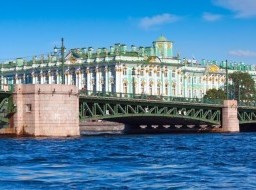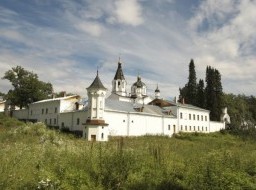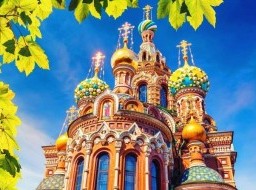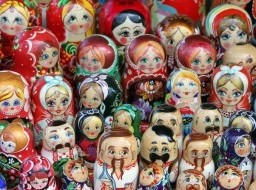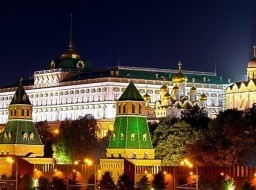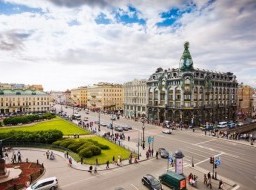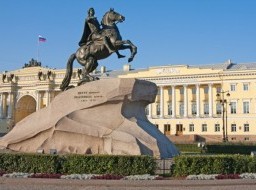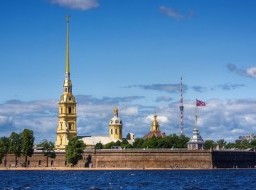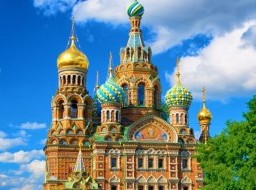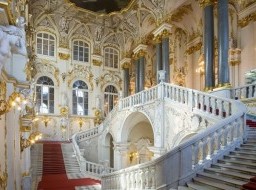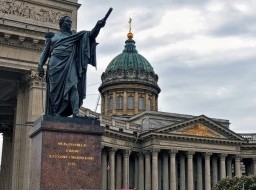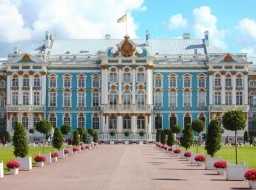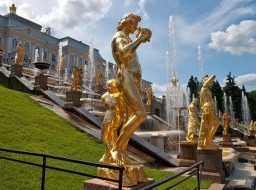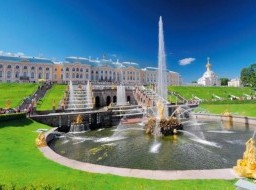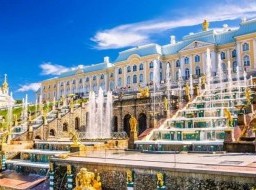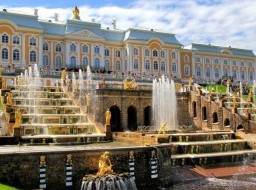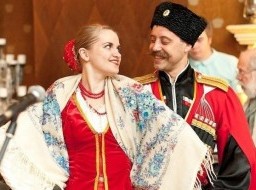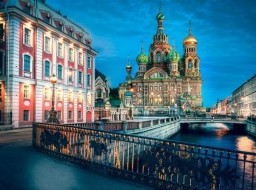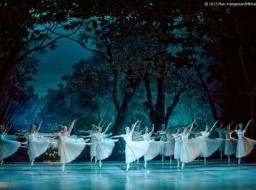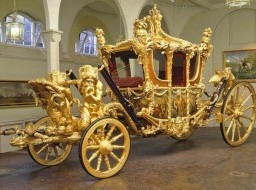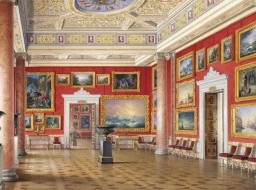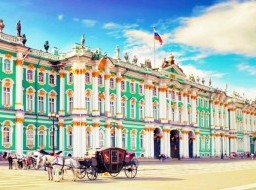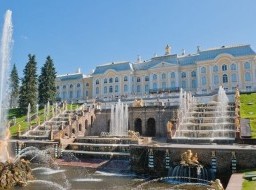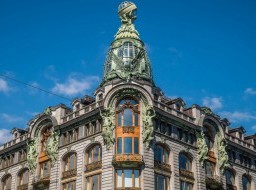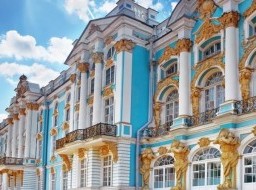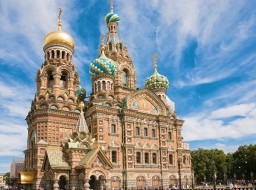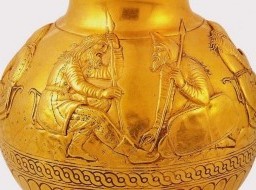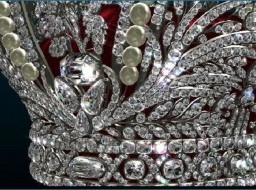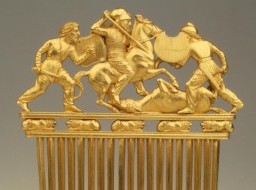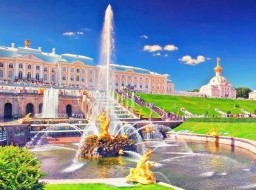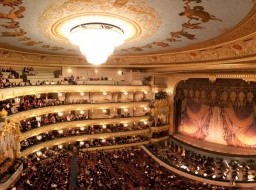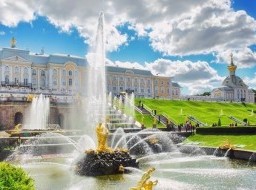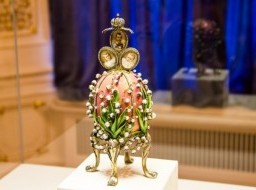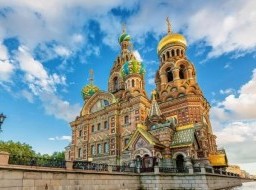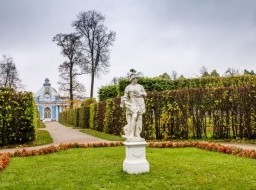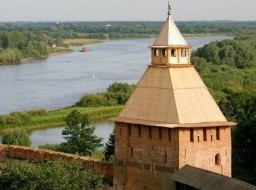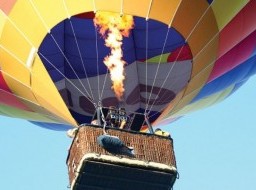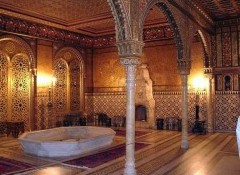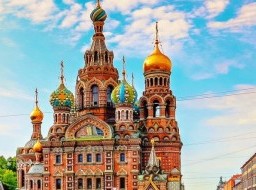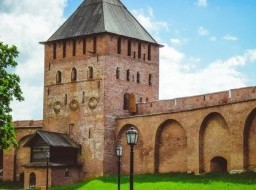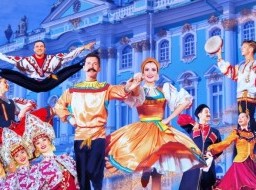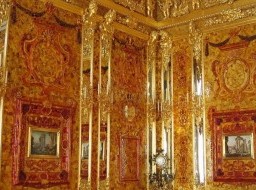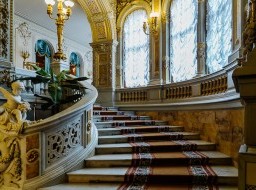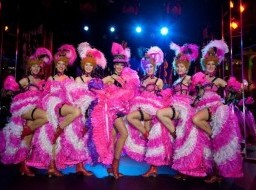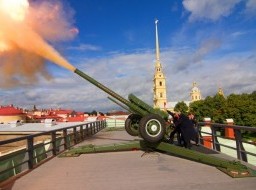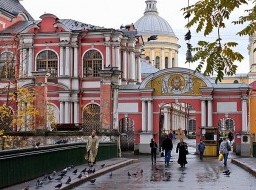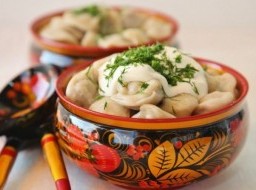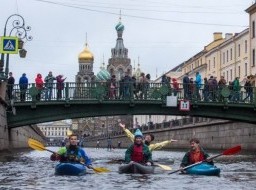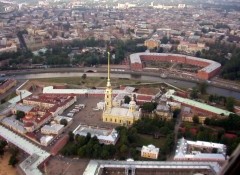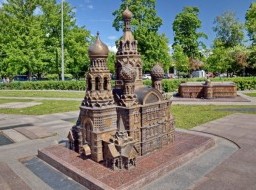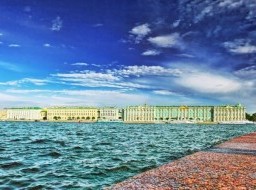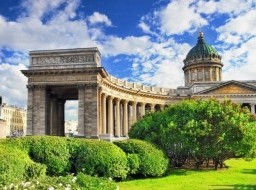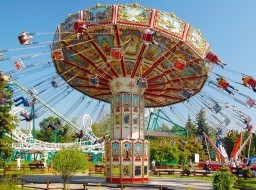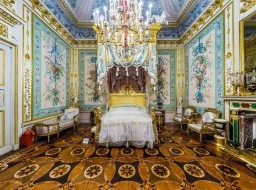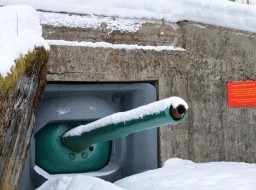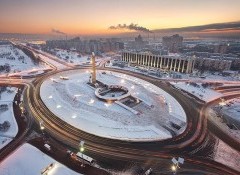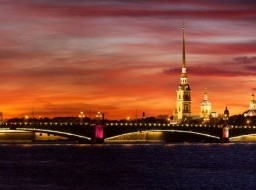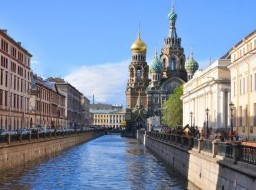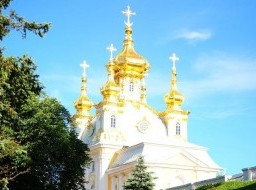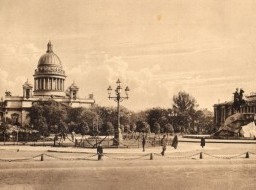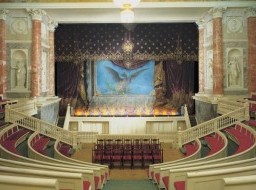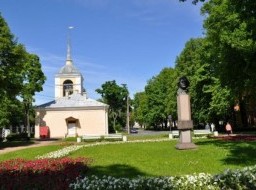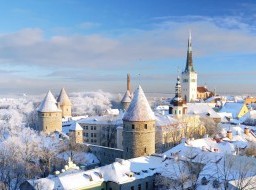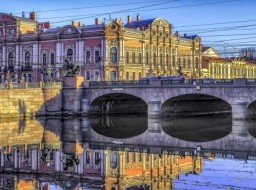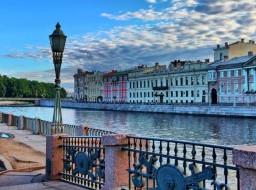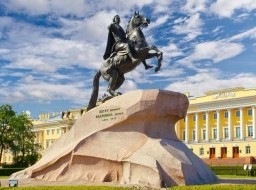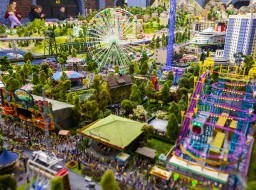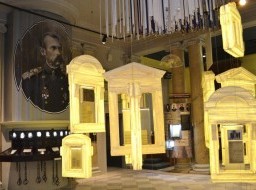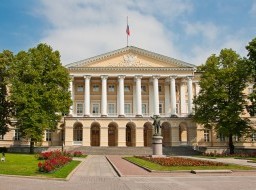Pavlovsk
Pavlovsk is the youngest of the grand Imperial estates around St. Petersburg. Named in honour of Tsar Pavel, this fine neo-classical palace and its extensive landscaped gardens are stamped with his taste and even more so with that of his wife, the German-born Maria Feodorovna. Although there was no love lost between Pavel and his mother, Catherine the Great, it was she who originally presented him with the 362 desyatinas - 607 hectares - of land around the Slavyanskaya River. Perhaps it was the impossibility of living with her son at Tsarskoe Selo, combined with the desire to keep him and his family reasonably close, that prompted her to do so, although the official reason was the birth of her grandson, the future Alexander I. Although lacking the dazzling splendour of the estates at Tsarskoe Selo and Peterhof, Pavlovsk is well worth visiting both for the treasures in the elegant palace and for the charming, rambling park, which is one of the largest and finest English-style landscape gardens outside the UK. Both the Park and the Palace at Pavlovsk were victims of wanton destruction during the Nazi occupation, and the extraordinary restoration project was not completed until the mid-1950s. Fortunately, there were extensive blueprints available for all aspects of the estate, so what you see now is almost entirely faithful to the original designs. 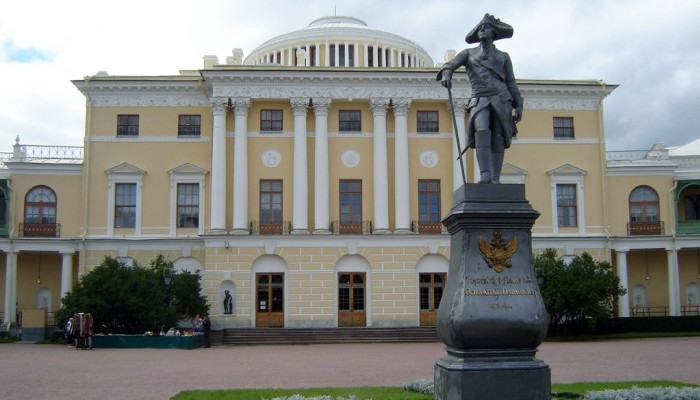 Pavlovsk Palace and Park Ensemble is listed among Top 10 Attractions to Visit in Russia Pavlovsk is a superb palace and park ensemble, dating from the late 18th to the 19th century, it was a summer residence of the Russian emperor Paul I and his family. Its architects were amongst the greatest of the period: Cameron, Brenna, Quarenghi, Voronikhin and Rossi. Men of rare talent and superior culture, they built up a complex characterized by exceptional unity of style, however different their artistic individualities and aesthetic ideals. The formation of the Pavlovsk Palace collections was closely connected with the journey by its owners through Europe in 1781-82. They visited workshops of well-known artists, ordering and acquiring paintings, furniture, bronze articles, silk fabrics, china sets, etc. They also brought back to Russia a large number of antique sculptures from Italy, and gifts from European royal courts. Many of these treasures are on view, together with an excellent collection of portraits by Russian artists, and a number of Pavlovsk landscape paintings and drawings. The landscape park, one of the largest in Europe, covers around 1,500 acres and it is one of the country's largest and most picturesque. The Pavlovsk park, now one of the finest examples of landscape gardening, was laid out on a tract of land covered with swamps and forest. Its numerous decorative pavilions and remarkable statuary have been skilfully introduced into a landscape background; nature and art are blended here in the utmost harmony. Its palace and landscape park are not the only remarkable features of the Pavlovsk complex. Most important are also the rare collections of furniture, artistic textiles, objects in hard stone, in porcelain, crystal glass and ivory, decorating the exquisitely furnished interiors. Exceptionally rich and varied, these collections have long since assured the Pavlovsk Palace a place of honour among the country residences of Russia. Gathered together here are specimens of the highest order of every existing form of line and applied arts, both Russian and those of many other lands. The formation of the Pavlovsk complex took place during a momentous period in the history of Russia, marked by the glorious victories of the Russian armies under the generalship of Suvorov, Rumiantsev and Admiral Ushakov, and the crushing defeat of Napoleon in the Patriotic War of 1812. In the early 1800s Pavlovsk came to be what may be called a Russian Parnassus, a place where prominent writers and poets forgathered. Nearly two hundred years have passed since the beauty of the Pavlovsk Palace and the lyric charm of its park first began to attract the attention of artists. Many a canvas, watercolor and engraving of the place have been left us by such outstanding painters and graphic artists. Its art collections enjoy world-wide fame. Before the Revolution of 1917 these treasures were barred to the common people; and only when the Revolution had been achieved were the doors of the Pavlovsk Palace and the gates of its park thrown open to the people, their rightful owner. Both palace and park were declared national property, and thus assured complete protection. During the stormy days of the Revolution and the hard years of the civil war the Soviet Government did a great deal for Pavlovsk. It was among those architectural monuments which, despite the difficult financial position of the newly-constituted Soviet Republic, underwent the most urgently needed restoration as early as 1918. Pavlovsk was highly appreciated as an outstanding phenomenon of Russian culture by Anatoly Lunacharsky, People's Commissar for Education, who called it a perfect example of the fully expressed taste of its time. In May 1918 Pavlovsk became an art and culture museum and ever since has been visited by people from all parts of the Soviet Union.
As soon as the War of 1941-45 broke out, a mass evacuation of the museum collections into the interior of the country was begun by government decision. Hundreds of packing-cases containing thousands of exhibits were removed to special depositories, dozens of marbles and bronzes that embellished the park were buried underground, and the statues and stone vases from the palace rooms were stowed away and walled up deep down in the basement. For nearly two and a half years the invaders ravaged Pavlovsk, plundering what property remained in the palace, blowing up bridges, destroying many of the pavilions, felling some seventy thousand trees to build fortifications in the park. In January 1944, forced into a retreat by the Soviet army, the invaders set the palace on fire, turning it into a pile of rubble and ashes. Ground pockmarked with craters, heaps of upturned earth, large areas entirely shorn of trees - that is what was left of the once beautiful park with its colorful flower- beds and picturesque bits of woodland scenery. Now, after many years, the palace - risen out of its ruins - once again lifts its dome above the park's green foliage. It was reconstructed. Slowly, with the greatest attention to accuracy, the work of restoring the decor and furnishings of the palace went on from room to room. Starting in 1954 with the less elaborately decorated rooms in the southern part of the building, which were restored and opened to the public in 1957, and gathering experience and perfecting their craftsmanship as they went, the restoration crew completed their work in the central part of the palace, where the interiors presented a particularly complicated pattern of decor. |
|

